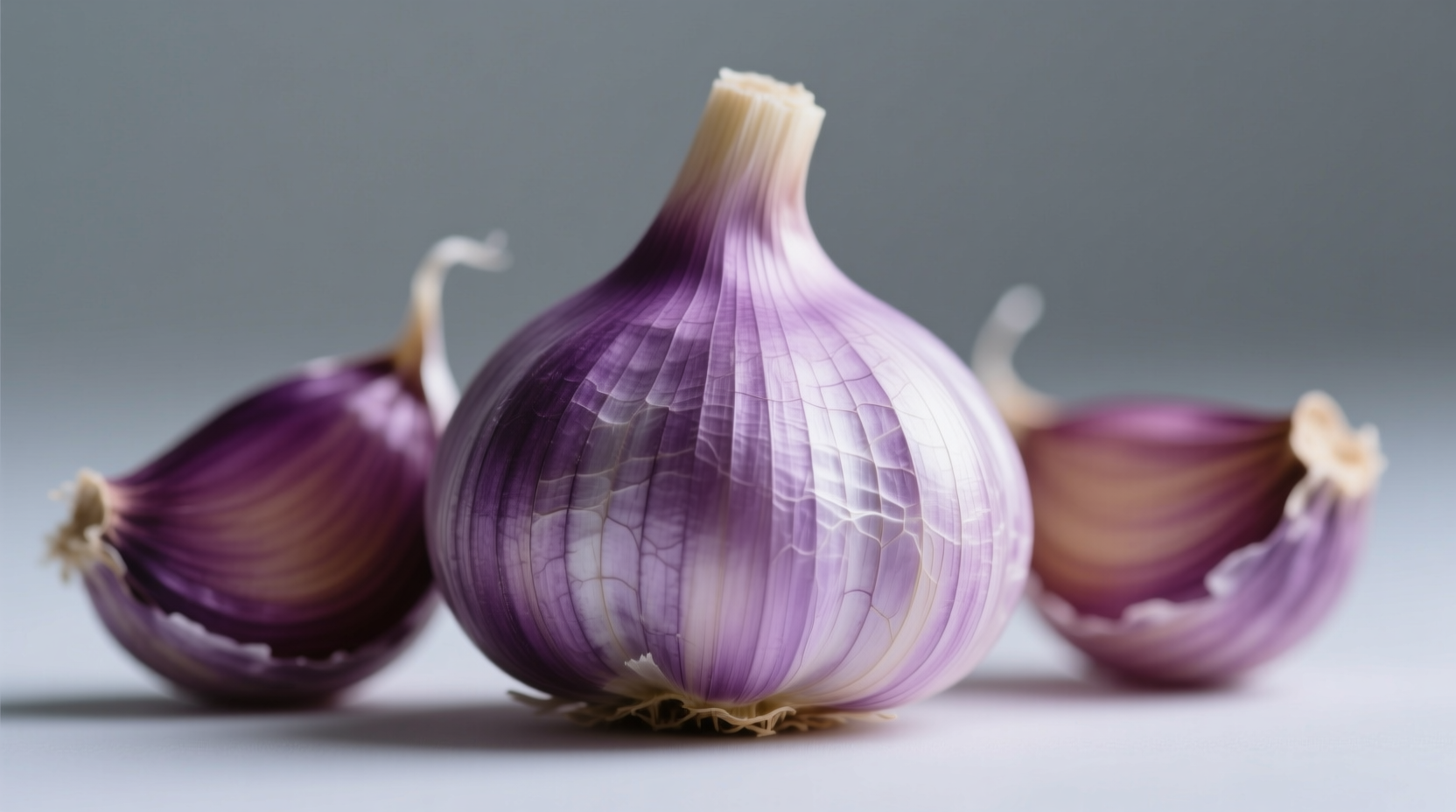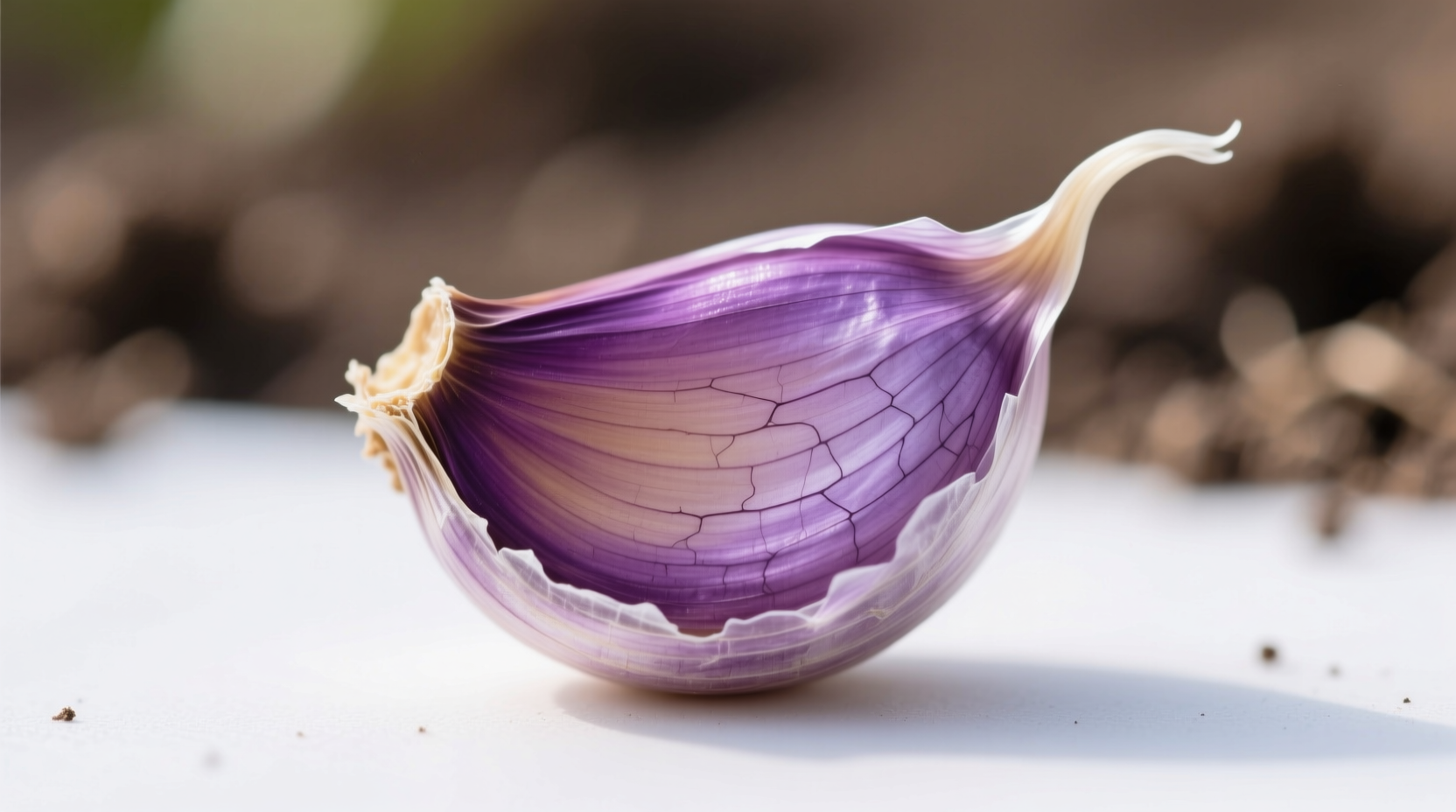Have you ever sliced into a garlic clove only to find unexpected purple or blue hues? You're not alone. Many home cooks experience this surprising color change and immediately wonder if their garlic has gone bad. The good news is that purple garlic is perfectly safe and often indicates high-quality, fresh bulbs. Let's explore exactly why this happens and how to handle it in your kitchen.
Understanding Purple Garlic: What You Need to Know First
When you discover purple garlic, your first concern is likely safety. Rest assured, this color variation is completely natural and doesn't affect flavor or nutritional value. In fact, purple garlic often contains higher levels of beneficial compounds than standard white varieties.
The purple color comes from anthocyanins—water-soluble pigments also found in blueberries, red cabbage, and eggplants. These compounds act as natural antioxidants and change color based on pH levels. When garlic encounters alkaline conditions (higher pH), these pigments shift from colorless to vibrant purple or blue.
| Color Change Type | Appearance | Is It Safe? | Common Causes |
|---|---|---|---|
| Natural purple varieties | Consistent purple streaks throughout bulb | Yes | Genetic trait of specific cultivars |
| Chemical reaction | Spots, streaks, or entire cloves turning purple | Yes | Alkaline conditions during cooking/storage |
| Sign of spoilage | Mold growth with fuzzy texture | No | Excessive moisture, prolonged storage |
The Science Behind Purple Garlic Discoloration
Garlic contains sulfur compounds that create its distinctive flavor and aroma. When these compounds interact with anthocyanins under certain conditions, the purple transformation occurs. This reaction typically happens when:
- You cook garlic in cast iron or carbon steel pans (which create alkaline conditions)
- Garlic comes into contact with baking soda or other alkaline substances
- You pickle garlic in vinegar with high mineral content
- Using hard water during cooking
According to research published in the Journal of Agricultural and Food Chemistry, the specific compound responsible for purple garlic is cyanidin glucoside. This pigment remains stable during cooking and doesn't affect garlic's beneficial properties. In fact, purple garlic varieties often contain 20-30% more antioxidants than standard white garlic, making them potentially more beneficial for health.

Different Types of Purple Garlic You Might Encounter
Not all purple garlic results from chemical reactions. Some varieties naturally feature purple coloring:
- Rocambole garlic: Known for its rich flavor and distinctive purple streaks, this heirloom variety is prized by chefs for its complex taste profile.
- Persian Star: Features striking purple stripes and excellent storage qualities.
- Chesnok Red: Develops purple hues when cooked and offers a sweet, nutty flavor.
These naturally purple varieties aren't genetically modified—they've been cultivated for centuries. The USDA Agricultural Research Service confirms that purple garlic varieties have been documented in cultivation since at least the 1800s, with historical records showing their prevalence in Mediterranean and Asian cuisines.
When Purple Garlic Is a Concern (And When It's Not)
While most purple garlic is perfectly safe, certain conditions warrant caution. Understanding the difference between harmless discoloration and actual spoilage is crucial for food safety.
Harmless purple garlic typically:
- Shows uniform or streaked purple coloring
- Maintains firm texture
- Has normal garlic aroma (possibly slightly stronger)
- Appears during cooking or pickling processes
Potentially problematic garlic shows:
- Fuzzy mold growth (white, green, or black)
- Soft, mushy texture
- Unpleasant sour or rotten smell
- Slime or excessive moisture
The Food and Drug Administration's guidelines on vegetable safety confirm that color changes in garlic due to pH reactions don't indicate spoilage. However, they recommend discarding garlic that shows signs of mold or significant texture changes.
Practical Tips for Handling Purple Garlic
Whether you've encountered naturally purple garlic or experienced discoloration during cooking, these practical tips will help you make the most of your purple cloves:
Preventing Unwanted Color Changes
- Add a small amount of acid (lemon juice or vinegar) when cooking to maintain neutral pH
- Avoid cooking garlic in reactive metals like cast iron when appearance matters
- Use non-reactive cookware (stainless steel, glass, or ceramic) for garlic-heavy dishes
Culinary Opportunities with Purple Garlic
- Embrace the color in dishes where appearance enhances presentation
- Use purple garlic in pickled vegetables for vibrant color contrast
- Try naturally purple varieties in raw applications like aioli for striking visual appeal
Professional chefs often seek out purple garlic varieties specifically for their visual appeal in gourmet dishes. The color doesn't affect flavor significantly, though some varieties like Rocambole offer slightly more complex flavor profiles with nutty undertones.
Storing and Using Purple Garlic Effectively
Proper storage maintains garlic quality regardless of color:
- Store in a cool, dry place with good air circulation
- Avoid refrigeration (causes sprouting and texture changes)
- Keep away from direct sunlight
- Use mesh bags or paper wrappers instead of plastic
When cooking with purple garlic, remember that the color change is purely cosmetic. Your dishes will taste identical to those made with white garlic. In fact, many chefs prefer naturally purple varieties for their slightly more complex flavor profiles.
Frequently Asked Questions About Purple Garlic
Is purple garlic safe to eat?
Yes, purple garlic is completely safe to eat. The color change results from natural anthocyanins reacting with alkaline conditions and doesn't indicate spoilage. This harmless chemical reaction affects appearance only while maintaining all nutritional benefits.
Why does my garlic turn purple when I cook it?
Garlic turns purple during cooking due to a reaction between natural anthocyanin pigments and alkaline conditions. This commonly happens when cooking in cast iron pans, using hard water, or adding baking soda. The color change is harmless and doesn't affect flavor or safety.
Do purple garlic varieties taste different?
Some naturally purple garlic varieties like Rocambole have slightly more complex flavor profiles with nutty undertones compared to standard white garlic. However, garlic that turns purple during cooking maintains the same flavor as it would have without the color change.
How can I prevent garlic from turning purple?
To prevent purple discoloration, add a small amount of acid (lemon juice or vinegar) when cooking, avoid reactive metals like cast iron, and use non-reactive cookware. The color change is harmless, so prevention is only necessary when appearance matters for your dish.
Are purple garlic varieties more nutritious?
Research shows that purple garlic varieties often contain 20-30% more antioxidants than standard white garlic due to higher anthocyanin content. These compounds provide additional health benefits while maintaining all the traditional benefits associated with garlic consumption.











 浙公网安备
33010002000092号
浙公网安备
33010002000092号 浙B2-20120091-4
浙B2-20120091-4